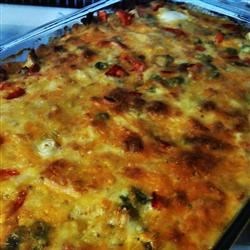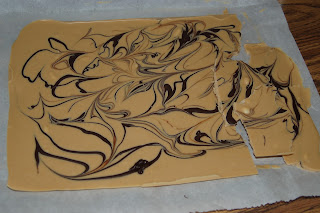Following a regular maintenance routine also means fewer blisters and backaches
by Ken Textor
With the short growing season here in
Maine, I’d rather spend time gardening than tending to my tools. I’ll
admit that in the past I’ve put away shovels that were dirty and rusty,
set aside dull and stained hoes, and “fixed” the cracked handle of my
favorite rake with a tight wrapping of electrician’s tape. As a result,
my tools didn’t work as well as they should have. I’ve learned since
then, though, that the time I wasted struggling with dull or broken
tools would be better spent with a brief, regular maintenance regime and
more efficient, productive hours in the garden.
Clean tools last longer
After every use, wash soil and grime from tools with a steady spray of water from the garden hose.
If nothing else, tools should be cleaned after each use. Doing
so keeps diseases, fungi, insect eggs, and weed seeds from being
unwittingly spread around the garden. Cleaning also extends the life of a
tool by removing moisture-laden, rust enhancing soil from steel
surfaces. For tools with a keen edge, a good cleaning keeps rust from
eating the edge away.
Spades, rakes, hoes, trowels, and any other tools that come
into contact with soil should be hosed off with water after each use.
With the garden hose nozzle adjusted for maximum pressure, average
garden soil washes away easily. To remove heavy clay soil, some
scrubbing with a hard bristle brush also may be necessary. After washing
any tool, dry it with a cotton rag before putting it away.
Tools that don’t come in contact with soil, particularly those with
sharpened edges like axes, pruning shears, and knives, should be wiped
down with a thick, rough cotton cloth to remove any gums and saps from
their blades. When working on pitch-producing plants like conifers,
dampen the cloth with a little paint thinner before wiping. In all
cases, once dirt and residue are removed, dry the tool with a clean
cotton rag.
Apply oil to prevent rust
Oil steel tool heads to prevent them from oxidizing. The oil creates a barrier between the air and the steel.
Even after washing and drying, steel tool heads are still
susceptible to rust when exposed to oxygen. In fact, as a general rule,
the better the grade of steel used, the more vulnerable it is to
rusting. So, considering the high cost of quality gardening tools, it
just makes sense to keep rusting to a minimum.
Motor oil is an inexpensive and effective rust preventer. When
applied to steel surfaces, the oil insulates the steel and prevents it
from oxidizing. To thin the oil out and make it easier to work with and
to better coat both porous and smooth steel surfaces, I mix one quart of
nondetergent 30W motor oil (any brand will do) with a pint of kerosene
or lamp oil. This 2:1 ratio of oil to kerosene can either then be wiped
onto the steel surface with a clean cotton rag or sprayed on to metal
surfaces—a recycled household-cleaner spray bottle works for me. Store
the mixture away from heat sources and dispose of it as you would any
motor oil.
Whichever way the oil is applied, keep the coating thin so it
won’t drip off the tool head and onto the floor. Because oil is
organically based and breaks down rapidly in soil, you don’t have to
worry about this small amount of oil adversely affecting your soils.
Remove rust with a wire brush
Extremely
rusty tools require special attention. I use a sheet of 80-grit
sandpaper to remove light coatings of rust. For a slightly heavier coat,
a stiff wire brush can be effective. But, when rust has turned a steel
surface rough, like the texture of medium-grit sandpaper, a heavy-handed
approach is needed. On badly pitted steel surfaces like those on tools
you find at yard sales, the quickest and most sensible option is an
electric drill with a wirebrush attachment.


 Sand away a light coating of rust. 80-grit sandpaper should be coarse enough to get the job done.
Use a wire brush to remove a layer of rust.
For a very heavy coat of rust, use a drill with a wire brush attachment.
Sand away a light coating of rust. 80-grit sandpaper should be coarse enough to get the job done.
Use a wire brush to remove a layer of rust.
For a very heavy coat of rust, use a drill with a wire brush attachment.
Before taking any kind of wire brush to a tool, always put on a
pair of safety glasses. The rust particles or the wire bristles can fly
off at high speeds and in unpredictable directions.
Once I’ve removed as much rust as possible, I then apply a coat
of my oil mixture to the newly exposed steel to stop the oxidation
process in its tracks and keep in check the almost-invisible residual
rust that I couldn’t remove.
Sharpen tools for peak efficiency
Sharpening tools is a slightly more complicated procedure than
removing rust. Some tools like shovels, axes, hoes, and trowels are best
sharpened with a hand file, while other tools like pruning shears and
knives call for a honing stone. Depending on how dull an edge is, some
tools may require a session with a high-speed grinding stone.
The tools needed for basic sharpening are neither expensive nor
complicated. The most basic sharpening tool is an 8-inch-long mill file
with a bastard cut (photo below, left), which you can purchase at any
hardware store for about $8. When sharpening a tool with a mill file,
work by drawing the cutting teeth in one direction over the edge being
sharpened. For best results, hold the tool steady in a clamp, vise, or
other bracing system, keeping the file at an angle from the plane of the
tool’s working surface as you push it along the edge you are
sharpening. And since sharpening edges with a mill file requires two
hands, get one that has a handle on one end. This makes it easier to
maneuver and get a good edge.
For pruning shears and knives, it’s possible to get good
results with any of the diamond, ceramic, or high-carbon steel honing
devices that are on the market. However, my experience with honing
knives and pruning shears is confined to oil stones, which I find easy
to use. When sharpening a blade on a stone, simply slide the blade over
the flat surface of the stone in one direction until you reach the
desired sharpness. No matter which device you choose to sharpen your
cutting blades, it should come with directions for use.

 Use a hand-held mill file to sharpen hoes and
shovels. The key to successful sharpening is keeping the tool steady and
the file at the proper angle. Sharpen pruning blades and knives by sliding an oiled honing stone in one direction across the tool’s beveled edge.
Use a hand-held mill file to sharpen hoes and
shovels. The key to successful sharpening is keeping the tool steady and
the file at the proper angle. Sharpen pruning blades and knives by sliding an oiled honing stone in one direction across the tool’s beveled edge.
Grind battered tools into shape
Grinding sharpens tools quickly. Lawn-mower blades and axes that take
a lot of abuse deserve an annual trip to a grinder.
Since the grinding process removes metal quickly, only the most
battered tools are candidates for regular grinding. Tools like
lawn-mower blades and grub axes usually merit an annual trip to my
grinder. An electric bench grinder is the best way to retrieve a keen
edge because it has an adjustable tool-rest platform that allows for
more exacting edges.
With a grinding wheel turning at several thousand rpm, the
chances of overheating the steel are high. Overheated steel will lose
its temper, which means its hardness becomes compromised and the tool
will never be able to hold a sharpened edge for very long. So during
grinding it’s very important to keep the tool from getting too hot,
preferably keeping the surface cool enough to touch. Periodically
immersing it in water is the standard cooling procedure.
High-speed grinding should be done with caution. Even with the
extra eye shields provided on some machines, you should always wear
safety glasses when grinding tools. A bench grinder/buffer can be
purchased for around $40. You can also do some basic touch-up grinding
with a small grinding wheel (less than $10) made to fit an electric
drill.
Store each tool in its own space
Drill holes in tool handles so they can be easily hung
from nails affixed to the walls of a garage or storage shed.
It’s important to store your clean, oiled, and sharpened tools
properly. I organize my tools according to when and where I use them.
Weeding tools are near the door closest to the garden; cutting and
pruning tools are near the door closest to the shrubs and woods. And I
return them all to the same spot when I’m finished to save time looking
for tools when it’s time to work.
Hanging your tools by their handles on a storage shed or garage
wall not only keeps them out of the way but also prevents damage to
sharpened edges. A 10-penny finish nail driven into a handy two-by-four
is the easiest way to keep tools aloft. I drill 1/4-inch holes through
the handles of my axes, shovels, hoes, rakes, and other long-handled
tools so I can hang them on the nails. I like to keep the business end
of the tool hanging toward the floor so when I pull the tool off its
nail, it won’t swing down and hit something or someone.
I’ve seen the light—or at least have become more aware of my
own dimness— as far as tool maintenance is concerned. Without being too
compulsive about it, I now clean, sharpen, and repair all my gardening
tools, even if they are only being set aside for a couple of weeks.














































